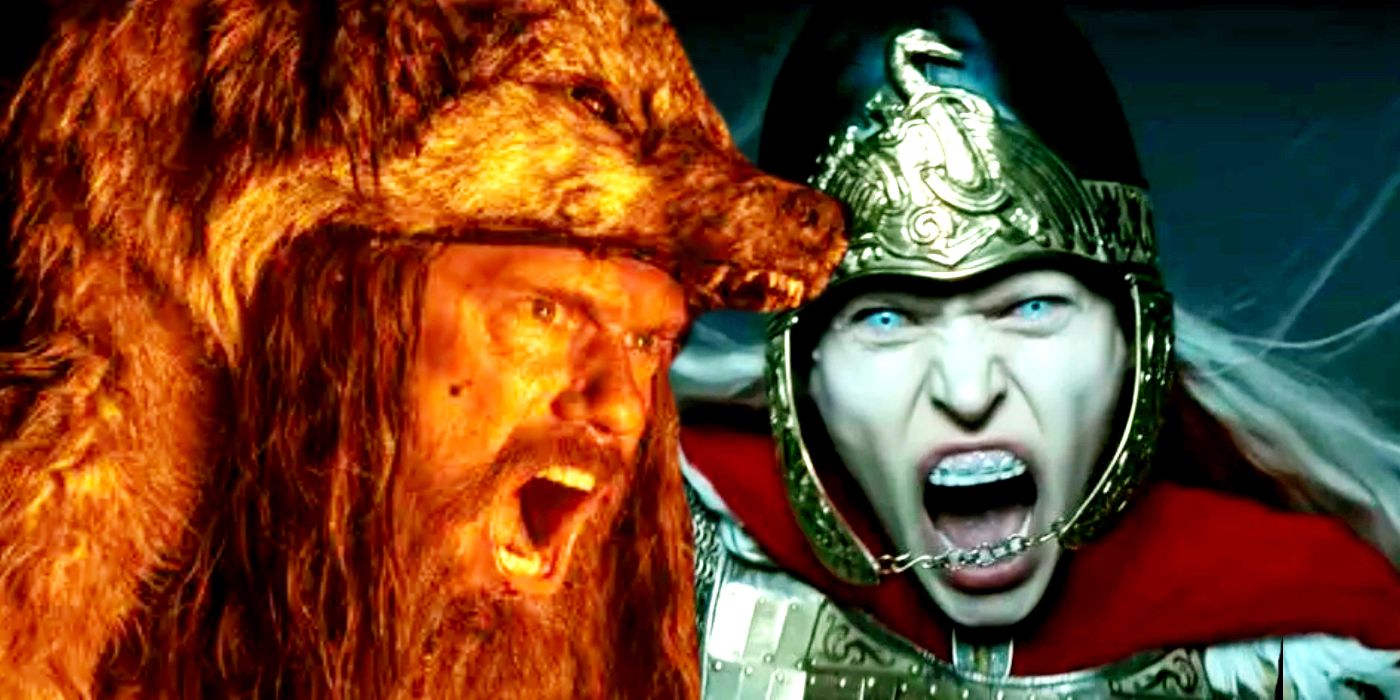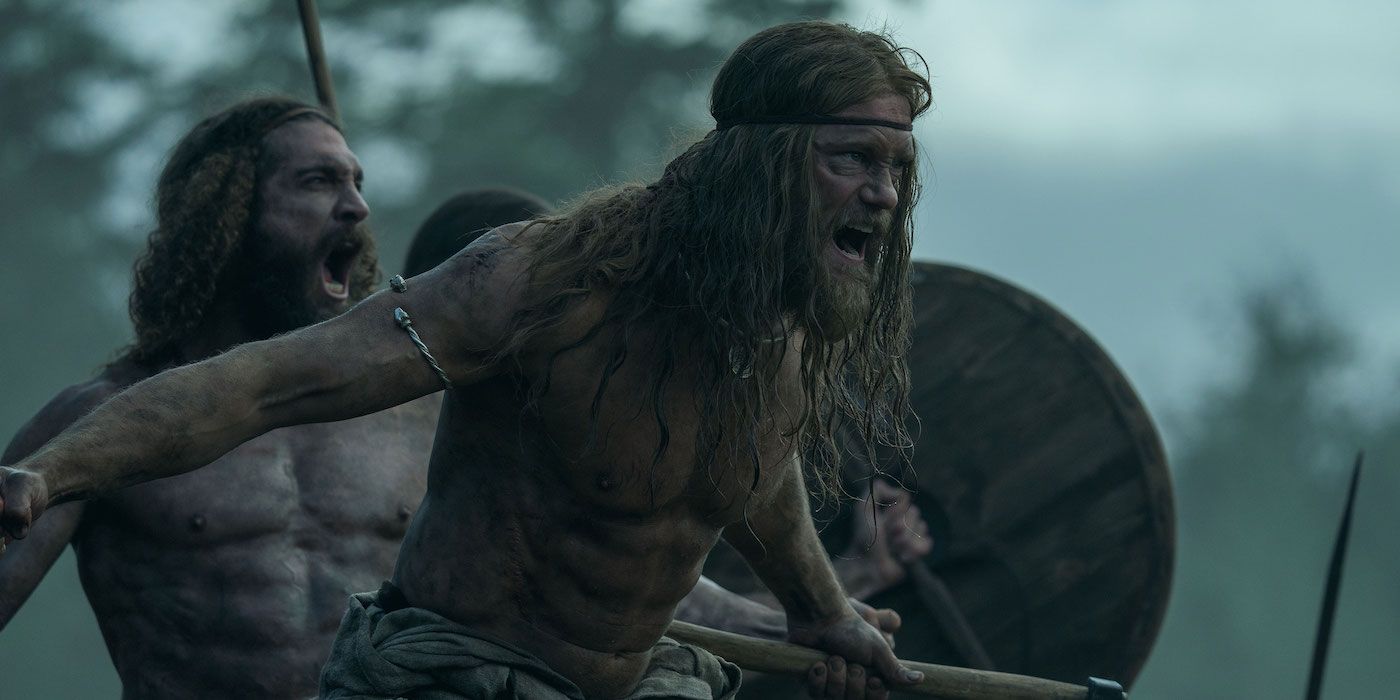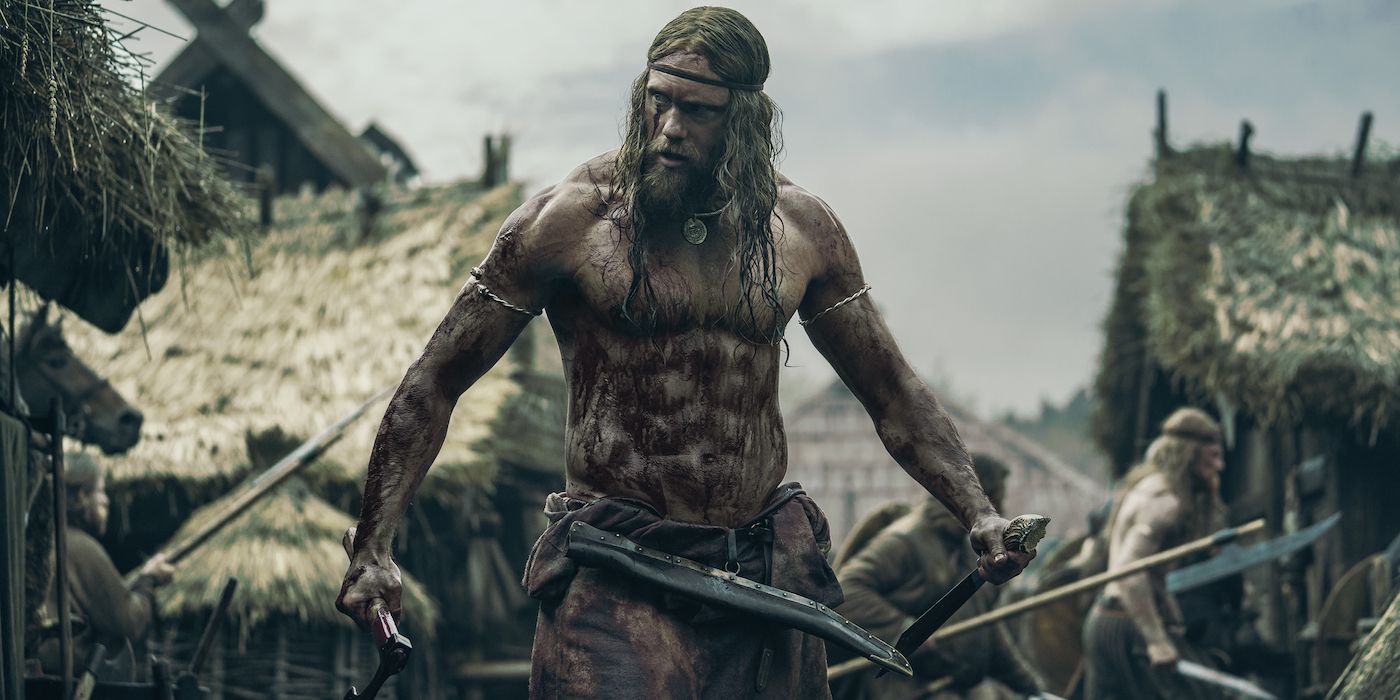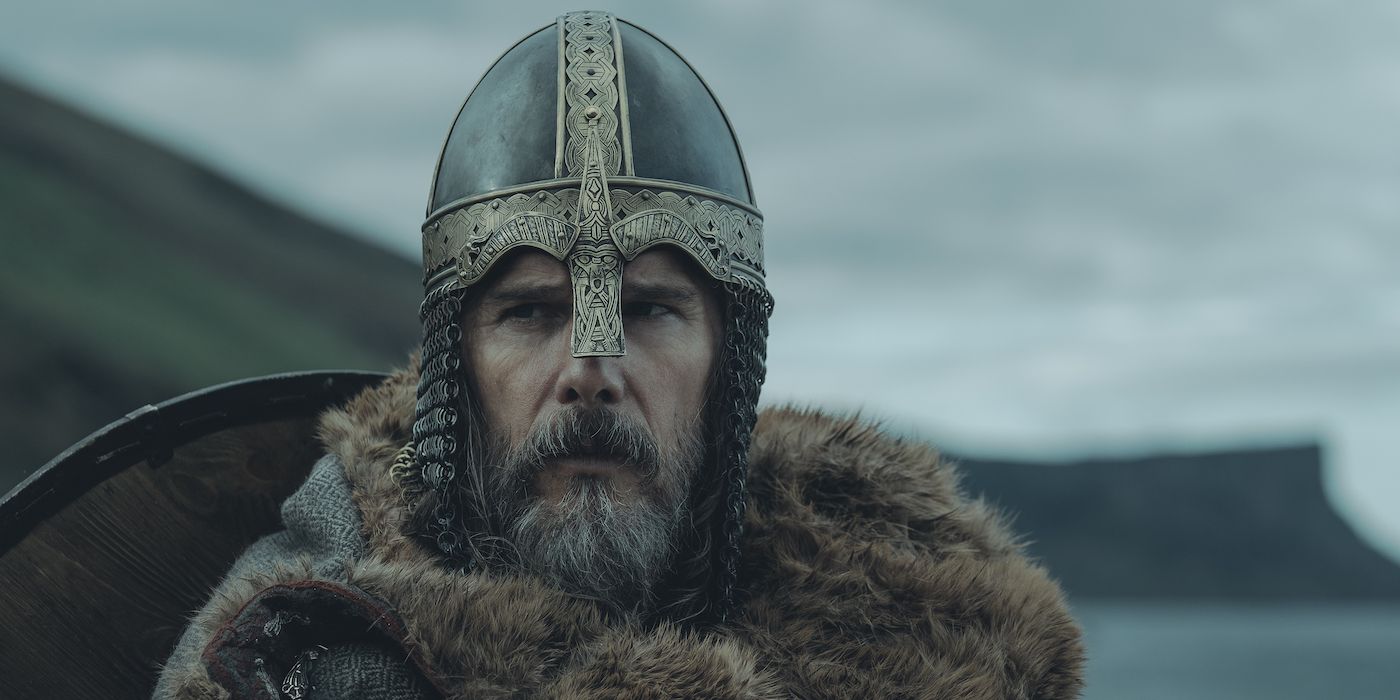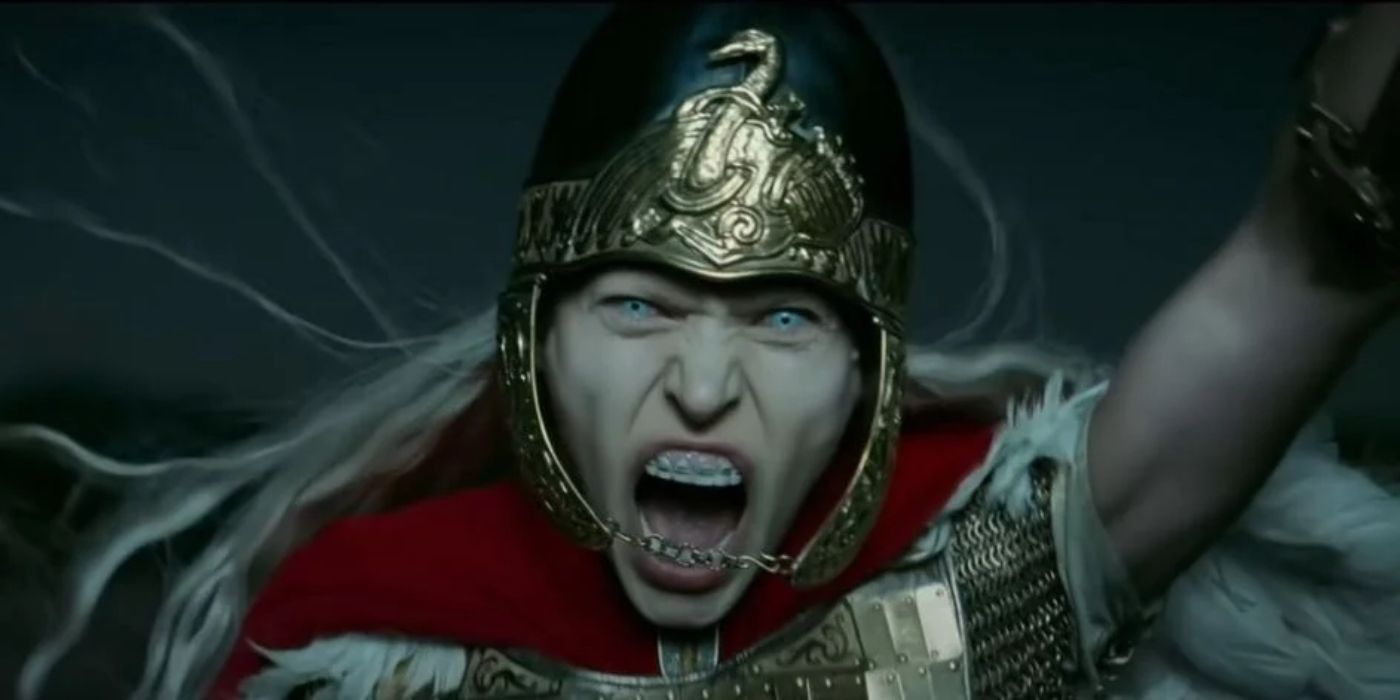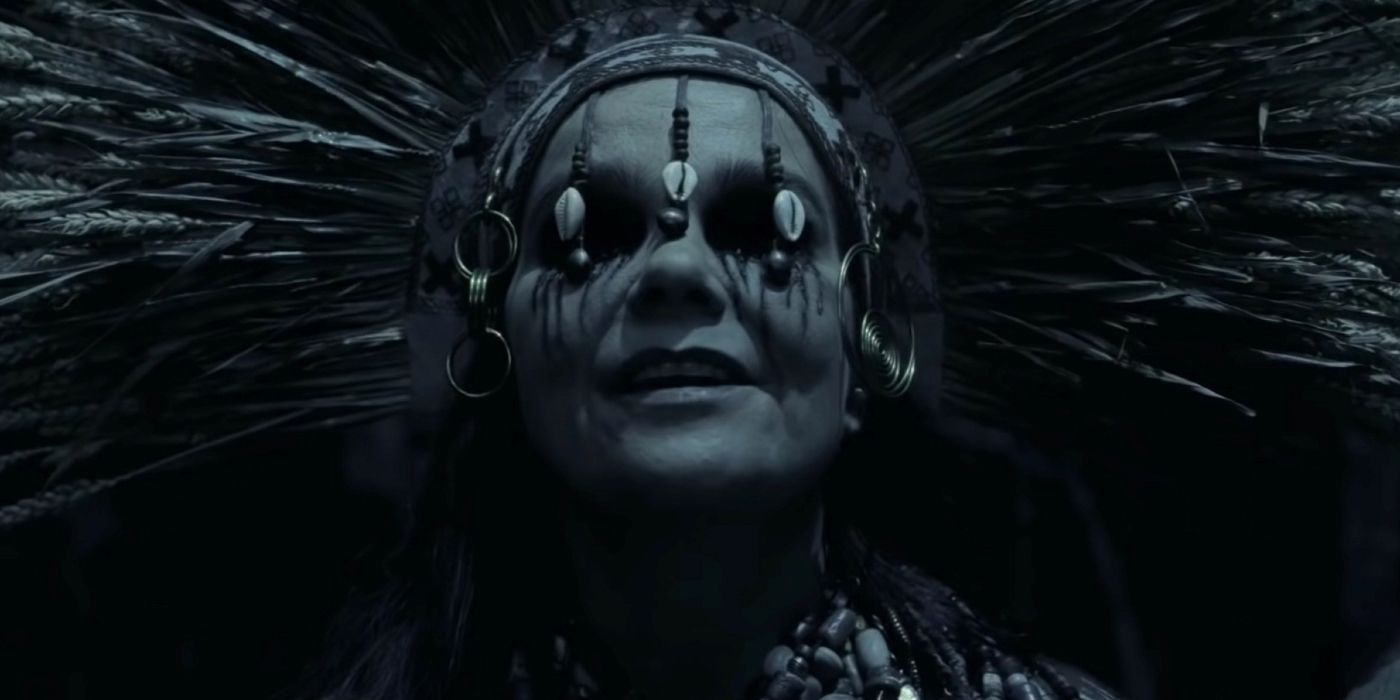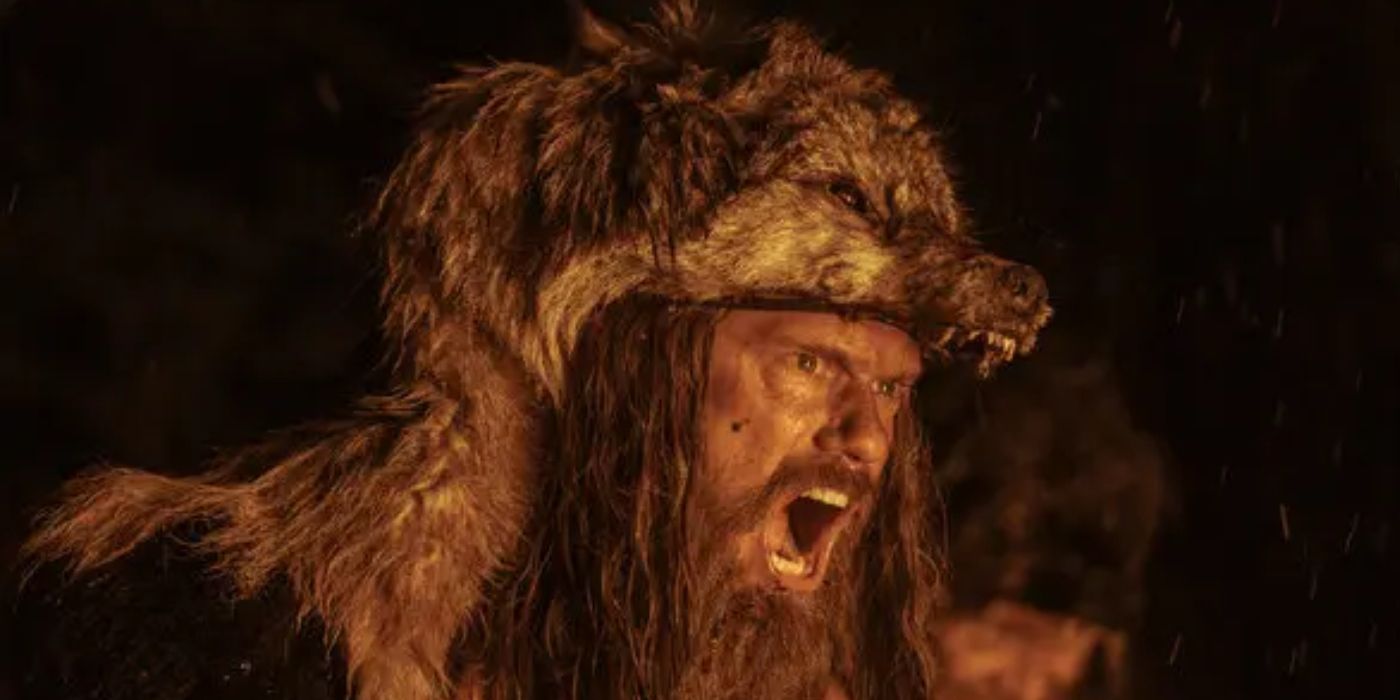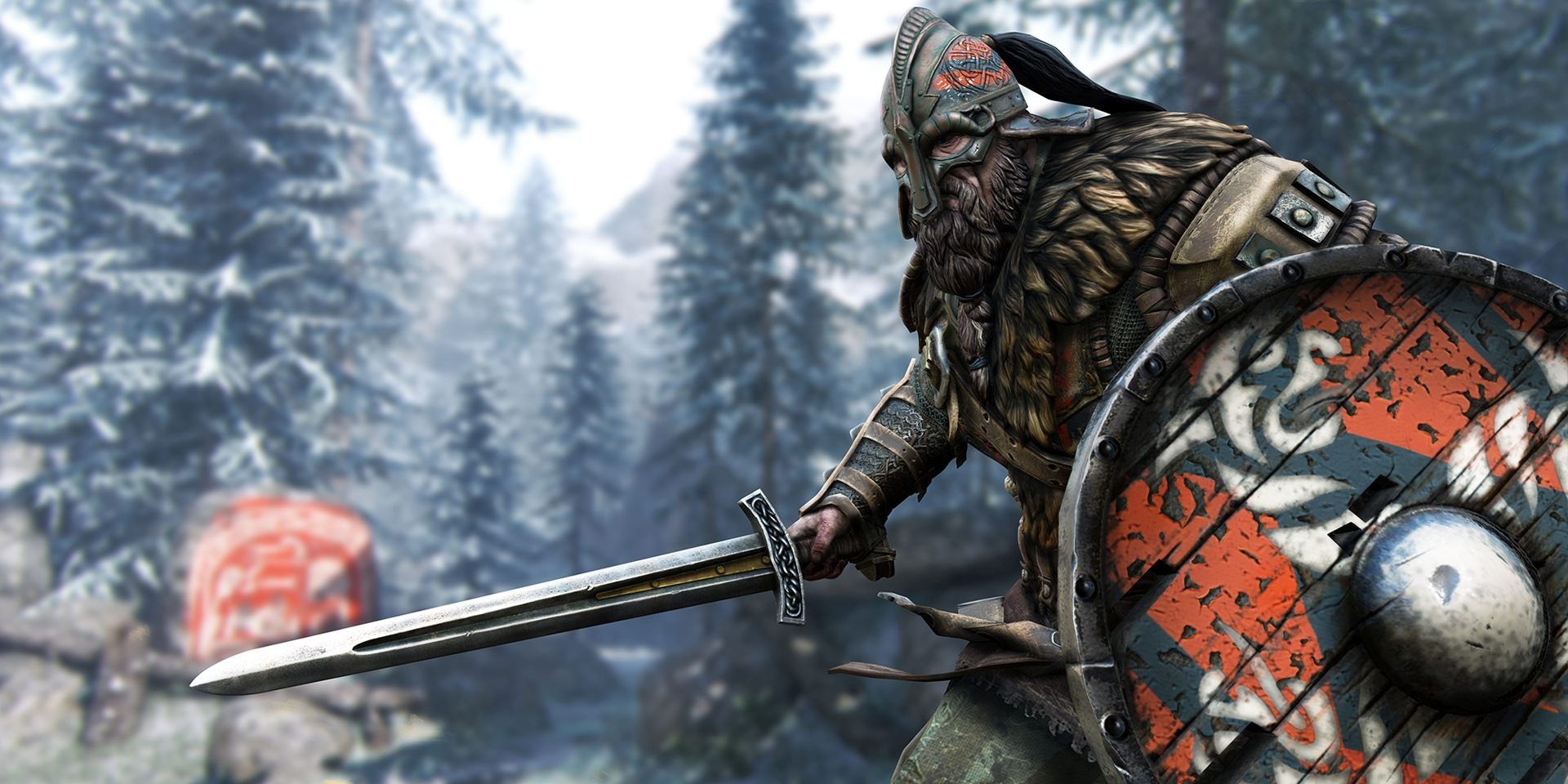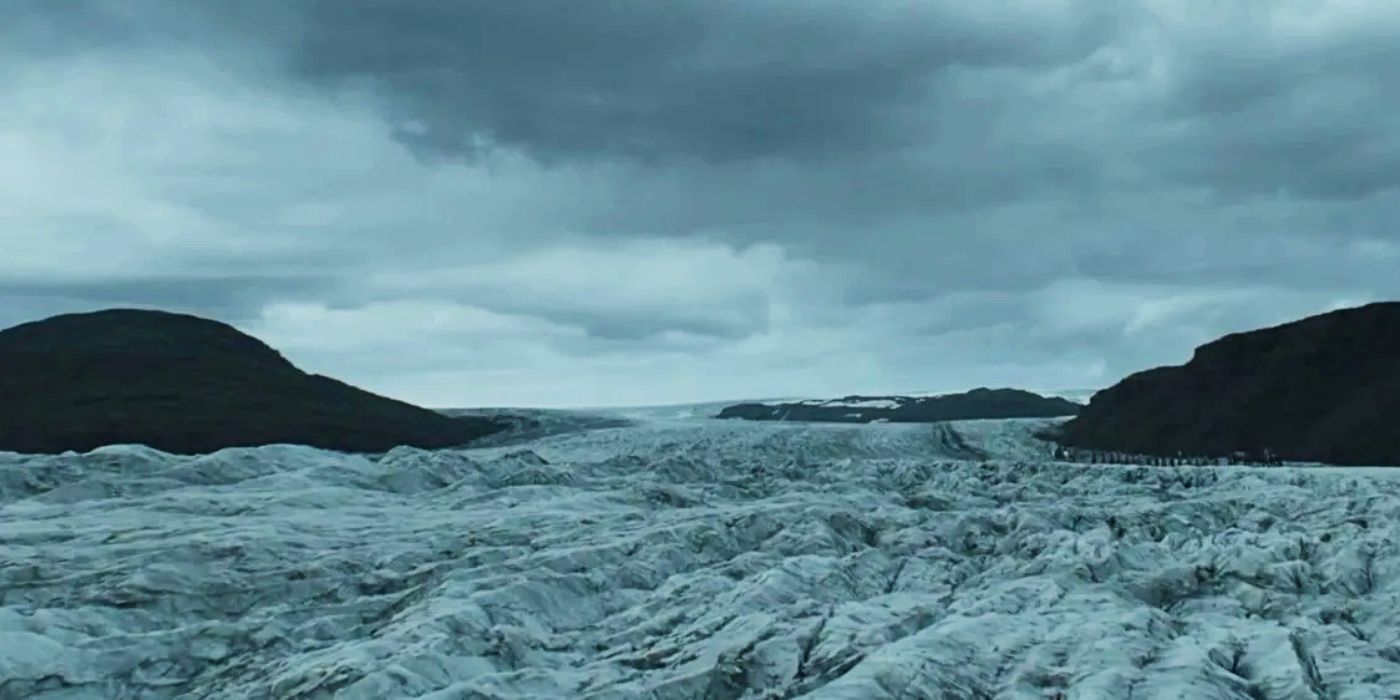This article contains spoilers for The Northman
The Northman is the latest film from Robert Eggers, but is it a true story and how do ancient Viking history and Norse mythology factor into the foundations of the film? The Northman tells the story of Amleth, a young Viking prince. When Amleth's father is killed by Fjolnir, Amleth's uncle, he vows revenge against Fjolnir and embarks on a lifelong journey to exact his vengeance.
The Northman follows the usual style of Robert Eggers, combining a period piece setting with psychological thrills. Unlike Eggers' previous work on The Witch and The Lighthouse, however, The Northman is arguably more accessible and "mainstream" than his previous efforts. That being said, Eggers has previously included elements of true stories in his movies - even when leaning into the more bizarre moments of his films - and thus The Northman is in many ways set up to follow this blending of dream-like events with reality.
These elements align so closely with Eggers' signature style that they lead to the question of whether The Northman is a true story. Given how a lot of the more strange elements of the film tie into Viking history and Norse mythology, it isn't out of the realm of possibility for The Northman to be based on true events. So how closely do all of these elements tie into real-world history in Robert Eggers' latest Viking adventure?
The Northman Isn't Directly Based On A True Story
The Northman isn't directly based on a true story, instead being written by Robert Eggers and his writing partner for this film Sjon, to be based on an Old Norse myth and folktale as opposed to being taken directly from reality. This folktale was Vita Amlethi. Vita Amlethi was a tale passed down through generations by word of mouth, not being officially recorded until around the year 1200 as part of Saxo Grammaticus' extensive history of Danish rulers and their history. The basics of the story are what provided the inspiration for The Northman, as well as the basis for other famous stories throughout history, such as Shakespeare's Hamlet.
Was Amleth A Real Person? Scandinavian Legend Explained
Vita Amlethi, the Norse folktale, translates into The Life of Amleth. While Amleth isn't necessarily based on a true historical person, the folktale passes down the legend of the character. While the story of The Northman takes the basis of this legend to inspire its story, the main character of Amleth is almost directly taken from the Norse tale. In Vita Amlethi, Amleth is a young Viking prince who lives happily with his father, Horwendil, and his mother, Gerutha. Horwendil's brother Fengo, however, is driven by a jealous hatred of his King Horwendil, and murders him, taking Gerutha as his own wife. This drives Amleth into a life-long rage, vowing revenge against his uncle for the crimes committed against his family. It's unclear whether the character of Amleth is based on any kind of real events or people at the time, but either way, the figure is the basis of the main character of The Northman, played by Alexander Skarsgard.
Who Was King Aurvandill? Myth & Thor Link Explained
King Horwendil from Vita Amleth also is steeped in mythology, much like Amleth. Horwendil is linked heavily to King Aurvandill of the Prose Edda, an Old Norse textbook written in the 13th century. In the Prose Edda, Aurvandill was a man that was abducted by the Jotnar. Upon his abduction, Thor, the Norse God of Thunder, confronts them and liberates the captured Aurvandill, with Thor leaving the scene with a Jotnar weapon stuck in his head. When Thor was returning Aurvandill to his home by carrying him across the Elivagar rivers, Aurvandill's toe became frozen. Thor then removes the frozen toe and throws it into the heavens, to form the constellation Aurvandill's Toe.
The Latinized version of Aurvandill - known as Horwendillus or Horwendil - is who features in the Norse legend of Vita Amleth. This means the Amleth's father was steeped heavily in both legend and mythology, having links to not only Amleth and the other characters that provide the basis of The Northman, but ancient Norse gods such as Thor as well.
Valkyries & Valhalla: The Viking Afterlife In The Northman
One of the defining elements of The Northman that link the film to reality through Norse myth is the inclusion of the Valkyries and Valhalla. In Norse mythology, the Valkyries were a host of female figures responsible for guiding the spirits of deceased Nordic soldiers to the afterlife. One of the prominent afterlife locations in Norse myth is Valhalla, a majestic hall located in Asgard and ruled by Odin. Valhalla was seen as a great honor for a warrior, living out their afterlife days in the hall of Odin and signifying an honorable death in battle. In The Northman, Amleth has multiple visions of Valkyries and Valhalla. At the end of the film, as Amleth lay dying after exacting his revenge on his uncle Fjolnir, he ascends to Valhalla on the back of a winged horse, rode by one of the Valkyries. This ancient Norse myth is brought somewhat to life in the film, with Amleth dying a glorious death in the fight with his uncle and ascending to the Hall of the Slain in Asgard, being transported there by a Valkyrie herself.
How Bjork's Seeress Fits Within Norse Mythology
In The Northman, Robert Eggers convinced Icelandic singer and actress Bjork to return to acting for the first time in nearly 20 years. In doing so, The Northman was able to include another aspect of ancient Norse mythology in the film: a seeress. In the film, Amleth encounters a seeress, played by Bjork, who lays out the Viking prince's path and tells him how he can get the revenge on Fjolnir he so desires. The concept of seeresses was known from many Icelandic sagas, not unlike Vita Amleth, and the existence of such people has been confirmed by archeological finds. In ancient Norse myth and legend, seeresses would practice Seid, an ecstasy technique that allowed their souls to travel to worlds beyond ours for information. Using this technique, seeresses would be able to tell the future and fates of certain places or people. Because of this, seeresses held a high status in Viking societies and were treated with great respect due to their foresight. The concept of a seeress is one of the more prominent Norse myths that is alluded to in The Northman, with the sequence involving Bjork mapping out the plot from early in the film's runtime.
Real-Life Viking Berserkers (Are The Northman's Correct?)
Before one of the major action set pieces in The Northman, one of the many battles of the film, a sequence takes place in which Amleth is taking part in some kind of ritual amongst other men in his raiding party. This ritual sees the men wearing various animal skins, including bears and wolves, and mimicking the animal's movements and sounds throughout the night until daybreak, upon which they attack a settlement. This ritual proves Amleth as a Viking berserker, something taken from Nordic history. In Norse, and also Germanic, history, berserkers were hordes of unruly warriors that worshipped Odin that were said to fight in a trance-like fury, murdering at will when attacking settlements. It was said that berserkers could be heard coming due to the cacophony of noises made before and during a battle. The word berserker derives from the Old Norse words for bear and shirt, meaning lots of berserkers wore bearskins - as well as wolf and boar skins - into battle. The legends of Norse myth say that berserkers shapeshifted into these animals to win battles for them, with rituals before the battle enabling them to do so as they "became" their animals.
The Northman then presents Viking berserkers fairly accurately from what is known of real-world history. As mentioned, Amleth is shown in the film "becoming" a bear by making animal noises and acting like a beast, until ruthlessly attacking a settlement and killing anyone in sight while making the same amount of noise. While The Northman doesn't go as far as to show Amleth physically transforming into an animal, as was probably scare tactics passed down about berserkers in ancient times, it presents Amleth and his raiding party as accurately as history states Viking berserkers acted.
The Northman's Timeline: When It's Set & How Accurate Is It
The Northman is revealed to be set in 895AD upon the film's opening. The film then has a time jump on an unspecified amount of time, showing Amleth has grown from a child to a young adult. The time jump can't have been more than 10-15 years, however, meaning - due to what is known about ancient Vikings of that time - the film is fairly accurate with its portrayal. For example, jumping off the last point about Viking berserkers, one of the Old Norse poems chronicling the existence of berserkers was from 872-930AD, the reign of Norway’s King Harald I Fairhair. Using this, it is safe to assume The Northman's inclusion of Viking berserkers is historically accurate, as it falls within this time frame. Another thing mentioned in The Northman which provides evidence of its historical accuracy is the reign of King Harald himself. While Harald's reign provides evidence of berserkers existing, the film outwardly mentions that Fjolnir lost the kingdom that he stole from Amleth's father to Harald of Norway. Given the film is set in sometime in the early 900s, the timeline lines up, as Harald's historical reign ran from 872 to 930AD.
Vikings In Iceland: How Accurate The Northman's Setting Is
The bulk of The Northman is set on the island of Iceland, where Fjolnir decided to settle with his family following the loss of his brother's kingdom to Harald of Norway. This is another aspect of the film in which Eggers tried to be as accurate as possible to ancient Icelandic Vikings of that era. Many Vikings in ancient times traveled to Iceland to flee the many rules and regulations of a lot of Scandanavian countries of that time. It is said that one of the earliest Viking visitors to Iceland, Hrafna-Floki, was responsible for giving the island its name. Upon settling in Iceland, many Vikings would build turf houses, something that is shown in The Northman. Turf houses were built into the land of the island, given the sparsity of trees in Iceland due to early Viking settlers' lack of foresight. Not only did turf housing enable much more insulation than stone or wood houses, but it was much more sustainable given the use of natural environments. The Northman shows Viking inhabited Iceland to consist largely of this type of building, adding to the authenticity of its historical setting.
While The Northman, like The Witch and The Lighthouse, does contain a lot of fantastical elements, one of the things that can be said about Eggers is his devotion to historical accuracy. As with both the period settings of Eggers' previous films, the historical authenticity of The Northman was clearly something Robert Eggers and his crew strived to achieve. Although the film isn't based directly on a true story, lots of elements from Nordic folklore, to ancient Norse mythology, to the time period and locations, enable The Northman to be steeped in rich historical legitimacy.

